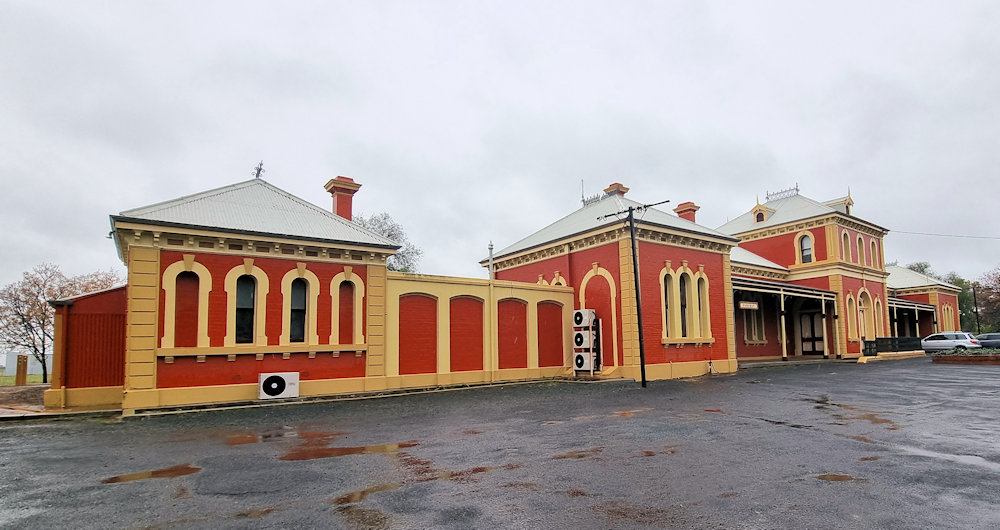Dunera Museum Hay New South Wales
The Dunera Museum in Hay explores one of Australia’s most unusual wartime stories. It sits in a restored railway station that once received more than two thousand refugees from Europe in 1940. These men travelled on the HMT Dunera after Britain sent them abroad as “enemy aliens.” However, most were Jewish refugees who had fled Nazism. The museum now explains their journey and their impact on Australia.
The Dunera Boys
The internees arrived at Hay on 7 September 1940 by four trains from Sydney. They were interned in Camps 7 and 8 (located near the Hay showground) under the guard of the 16th Garrison Battalion of the Australian Army. In November 1940 the other compound at Hay, Camp 6 (near the Hay Hospital), was occupied by Italian civilian internees. Camps 7 and 8 were vacated in May 1941 when the Dunera internees left Hay. Some went to Orange (NSW), others to Tatura in Victoria, and others to join the Pioneer Corps of the Australian Army.
The first group of internees at Hay became known as the ‘Dunera Boys’. The internment at Hay of this assemblage of refugees from Nazi oppression in Europe was an important milestone in Australia’s cultural history. Just under half of those interned at Hay eventually chose to remain in Australia. The influence of this group of men on subsequent cultural, scientific and business developments in Australia is difficult to overstate: they became an integral and celebrated part of the nation’s cultural and intellectual life. The ‘Dunera Boys’ are still fondly remembered in Hay: every year the town holds a ‘Dunera Day’ in which many surviving internees return to the site of their former imprisonment.
Japanese and Italian Internees and POWs
After the Dunera internees departed, Italian prisoners of war were placed in Camps 7 and 8. Japanese internees (some from Broome and from islands north of Australia) were conveyed to Hay and placed in Camp 6 in December 1941. In April 1942 the River Farm began operating on the eastern edge of the township, enabling market gardening and other farm activities to be carried out by the Italian internees and POWs. In February 1945, in the wake of the Cowra POW break-out, a large number of Japanese POWs transferred to Hay and placed in the three high-security compounds. On 1 March 1946 the Japanese POWs departed from Hay in five trains, and were transferred to Tatura. During 1946 the Italians who remained at Hay were progressively released or transferred to other camps. The Hay camps were dismantled and building materials and fittings sold off by June the following year.
What Did We Think?
Although there are few artifacts on display, the information boards provide plenty of information. This is a little understood area of Australian war-time history and museums like this help remember it. If you are in Hay it’s worth visiting to learn about the internees and POWs. Additionally you get to see a nicely preserved railway station.








To see what else there is to do in New South Wales, please see some of our other stories.
Our photos are available for purchase on

Leave a Reply